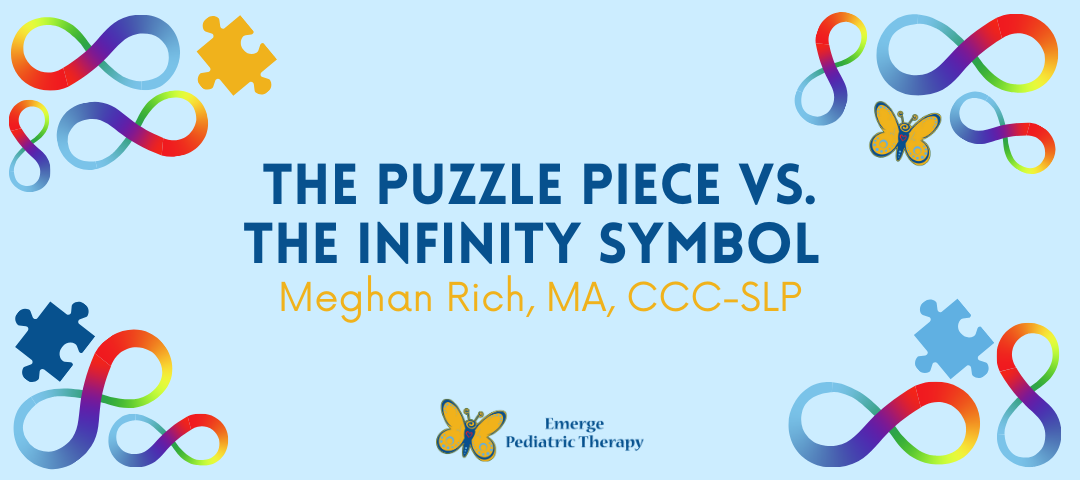
When it comes to autism awareness, symbols play a powerful role in representing the community and fostering understanding. Two of the most prominent symbols are the puzzle piece and the infinity symbol. While both aim to raise awareness, they resonate differently with various members of the autism community. In this blog, we’ll explore the origins and significance of these symbols, their impact on advocacy, and why the shift from the puzzle piece to the infinity symbol has gained momentum.
There have been a few widely recognized symbols for Autism throughout the years. The two most known being the blue puzzle piece and the puzzle ribbon. The blue puzzle piece has historically been a symbol for Autism. The use of blue perpetuated the myth that Autism is more likely to occur in males. Most statistics will say that boys are 4.2 times more likely to be diagnosed with Autism than girls. However, many girls go undiagnosed or are misdiagnosed. Studies show that the clinical presentation of autism may differ between genders (Head et al., 2014; Van Wijngaarden-Cremers et al., 2014).

The puzzle ribbon is another recognized symbol of the autism community around the world. The puzzle pattern represents the complexity of the autism spectrum and the different colors represent the diversity of the people living with the condition. However, use of this symbol has been controversial as well.
A New Direction
The majority of the Autistic community no longer supports the use of the puzzle symbol. The reason being, this symbol suggests that an Autistic person is a puzzle to be solved and with the right therapy, the “missing piece” can be found. The preferred symbol by the Autistic community is the infinity symbol. It represents the endless possibilities that exist for Autistic people when their differences are accepted. The color of the infinity symbol is important as well. Gold represents Autistic individuals while rainbow represents all neurodivergent people (ADHD, dyslexia, dyspraxia, Autism, etc.).
While it is important to recognize the opinion of the majority of the Autistic community, it’s also important to respect whatever symbol the individual chooses to use to represent themselves. Some Autistic people report continuing to use the puzzle symbol in an effort to reclaim its meaning. Regardless, understanding the history behind different symbols can help us make informed decisions regarding the types of values that we wish to support and convey to others.
